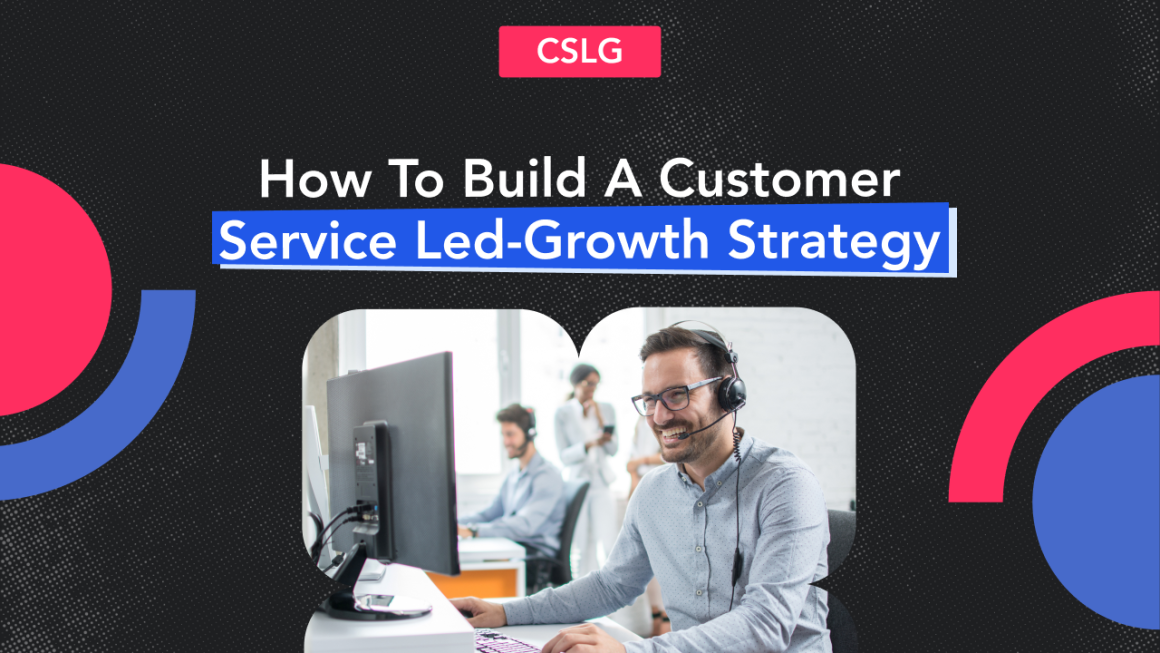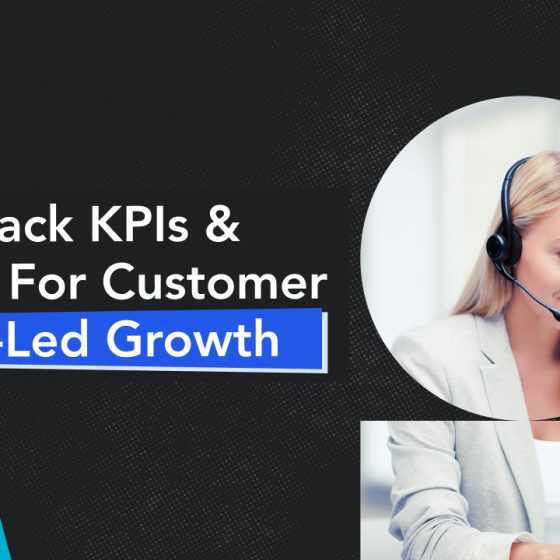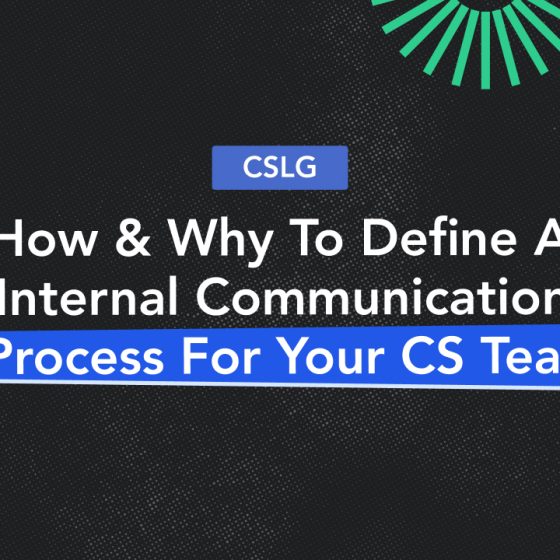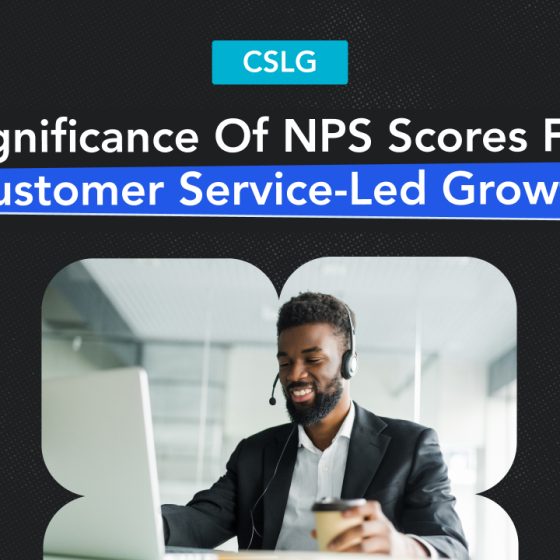Blockbuster, a popular video rental brand, saw fame and a downfall in the early 2000s. Eventually, it became irrelevant and lost to competitors like Netflix. Major factors in its decline were customers complaining about long lines, late fees, unhelpful employees, and difficulty reaching customer service.
Then there is Amazon, a multinational tech and e-commerce company that offers 2/7 customer service, quick resolutions, and even facilities like buyer-seller messaging. In 2020, the business grew by 38%—signifying continuous growth.
In the above examples, one business shuts down, and the other keeps growing, and there is one common factor.
Customer service.
The type of customer service a brand provides determines its growth in several ways. This is what we’re uncovering today.
In this blog, we’ll talk about:
- What does customer service-led growth mean?
- Why customer service-led growth?
- How to implement customer service-led growth in your organization
First, what is customer service-led growth?
You must have heard of different growth models like sales-led growth, community-led growth, and the popular one—product-led growth. But what is customer service-led growth?
It is a business strategy focusing on providing excellent customer service to drive business growth. It involves using multiple strategies to deliver great customer service and derive recurring business success as a by-product of it.
These strategies are concerned with different stages of following a customer service-led framework. The stages of this framework are:
- Collection of information about the customer and their issues
- Strategizing the customer service process
- Setting up the CS system
- Provide service on predictive, self and personalized levels
- Grow through retention and analysis
The key idea behind customer service-led growth is that businesses can attract and retain more customers, increase revenue, and leave their competitors behind by prioritizing customer satisfaction.
But why choose customer service-led growth?
When choosing a business growth strategy, among all options, why should your brand choose to drive growth via customer service? The simple reason is that providing continuous excellent customer service leads to long-term benefits, ultimately leading to sustainable business growth.
Here is how prioritizing customer service will give you sustainable business growth:
01. Increased customer loyalty
To practice customer service-led growth, you will prioritize customer service—which is more likely to build loyal customers. But wait, what do these loyal customers do for you? They bring repeat purchases and word-of-mouth marketing.
For example, huge brands like Starbucks, Puma, Zara etc have a loyal customer base that keeps coming back and brings positive word of mouth marketing too. These brands have created a self-sustaining growth cycle driven by customer loyalty.
02. Positive word of mouth
In the same vein as above, satisfied customers are more likely to recommend your brand to others, which can help drive new customer acquisition. This is particularly true in the era of social media, where positive reviews and recommendations can reach a wide audience. By prioritizing customer service, your brand can create a positive reputation that can attract new customers and help to sustain growth over time.
03. Reduced marketing costs
When you practice customer service-led growth, it can reduce the cost of acquiring new customers through marketing. Since satisfied customers are more likely to return for future purchases, meaning you may not need to spend as much on advertising or promotions to attract new customers. This can reduce customer acquisition costs and increase overall profitability. Result? Sustainable business growth!
04. Higher customer lifetime value
Customer service-led growth leads to increased customer satisfaction, loyalty, and retention, which can result in higher customer lifetime value. Higher CLV then means a loyal customer base and recurring revenue.
From its early days as a bookseller, Amazon prioritized customer service, increased its customer lifetime value, and has seen continuous success. Amazon has built a loyal customer base that drives its growth and profitability.
It’s pretty clear—Companies prioritizing CLV tend to have a more stable customer base, generate more revenue, and enjoy improved financial performance compared to those focusing solely on customer acquisition.
05. Improved customer feedback
Picture this: your brand prepares a mechanism for receiving continuous customer feedback. Based on this feedback, you keep improving your product. Eventually, you will be able to deliver something your customers will love.
How did this happen? You used a customer service-led growth strategy that helped you gain valuable insights into the needs and preferences of your customers. This will help your brand improve over time, which can attract new customers and retain existing ones.
In a nutshell: Prioritizing customer service can lead to sustainable business growth by driving customer loyalty, positive word of mouth, and higher customer lifetime value. By creating a positive reputation for quality and reliability, your brand can attract new customers and retain existing ones, all while reducing customer acquisition costs and driving long-term profitability.
What poor customer service does to your business
A business with poor customer service is like a leaky bucket.
Just as a leaky bucket loses valuable water and becomes less useful over time, a business with poor customer service loses valuable customers and becomes less profitable over time.
Ultimately, poor customer service hampers the business growth and the bottom line. The impact multifolds during tough times like recessions—one of which has striked us in 2023!
Poor customer service will lead to:
- Loss of customers: Poor customer service can lead to dissatisfied customers who may take their business elsewhere, resulting in a loss of revenue for your company.
- Negative word-of-mouth: Dissatisfied customers may also spread negative word-of-mouth about your company—which can harm your reputation.
- Decreased revenue: With fewer customers and negative word-of-mouth, your company’s revenue will decrease, impacting your ability to invest in growth and expansion.
- Reduced customer loyalty: When customers receive poor service, they may be less likely to remain loyal to your company, leading to decreased repeat business.
So, what is the solution?
The Customer Service-Led Growth strategy is your ultimate savior! CSLG will:
- Reduced cost of customer acquisition: When the benefits of CSLG strategy start to fall in, the cost of acquiring new customers will fall. This is because of all the referrals that will start flowing in. Who doesn’t love that? Especially during a recession!
- Increase customer satisfaction: With the CSLG strategy, your business delivers exceptional customer service, increasing satisfaction and fostering loyalty. This expert approach also enhances your brand image, attracting more customers and partners. Embrace CSLG for lasting success.
- Customer retention: When customers experience high levels of satisfaction, they naturally develop a strong bond with your company, leading to increased loyalty. This loyalty translates into continued patronage, creating a steady stream of revenue and unlocking new growth opportunities. Emphasizing customer satisfaction with an expert approach is the key to long-term profitability and sustainable expansion.
- Improved brand image: By consistently exceeding customer expectations, your company establishes a reputation for reliability and trustworthiness, making it highly appealing to both customers and potential partners. The expertly crafted brand image becomes a powerful asset, elevating your business above competitors and solidifying your position as a preferred choice in the market.
Here is how you can practice customer service-led growth in your business
Alright, now let’s get to the juicy part! If you want to experience the wonders of customer service-led growth for your own business, start by using these strategies:
01. Focus = providing positive customer experiences
As a business that wants to grow via customer service, your main focus should be providing positive customer experiences in every way possible. Providing positive customer experience in 2023 includes everything from understanding a customer’s needs to offering helpful, prompt resolutions.
Before you can provide experiences your customers will love, you need to capture details that help you understand your level and their expectations in terms of customer service. Here’s what you should look at capturing:
- Basic customer details: Collect information like age, demographics, full names etc to know your customers at least on the surface level.
- Customer requirements: Understand what the customers are expecting out of your brand’s product or service.
- Customer feedback: Get an insight into how customers feel about your brand.
- Preferred channels for communication: Helps you understand the places where your customer support should be.
- Customer use cases: Look at the problems your customer is trying to solve with your product.
- Competitor intel: Get an understanding of what your competitors are doing and how you can do it better.
Capturing information mentioned above gives you a baseline to start with. Based on the information you get, you can start setting up your CS system. More on that later!
When you provide positive customer experiences continuously, you get the following:
- Increased customer loyalty: Customers will not switch to another brand because they’re already getting what they want from yours.
- Enhanced business reputation: When customers are satisfied, they will talk about your brand positively. This will enhance your business reputation.
- Improved customer retention: With customer loyalty comes customer retention. And then customer retention also means repeat purchases. Double win!
The result? Improved business growth!
02. Create a culture of customer service excellence
Fostering a culture of customer service excellence would mean continuous delivery of excellent customer service. This can only be done when you strategize your customer service plan in advance. When strategizing your customer service plan, keep these in mind:
- Issues to be prioritized: Establish issues that need to be on a priority and the ones that can be put on a low burner.
- Number of team members needed per issue: Allot a set number of agents for different kinds of issues.
- Resolution process: Create a resolution process to be followed for all kinds of issues.
- Level of support for different issues: Define how much support should be provided to each issue—whether a call is needed or chat will do.
- Internal communication guidelines: Set up guidelines on how communication will flow internally.
- KPIs and metrics to be tracked: What metrics will be tracked to monitor the performance of the customer support team.
A culture of excellent customer service will lead to greater business success, as customer experience leaders see a 14% compound annual growth rate compared to just 2% for organizations with a bad customer experience.
03. Manage and measure customer satisfaction
A report found that 75% of businesses believed they were meeting their customers’ expectations for service, while only 42% of customers agreed.
This shows a gap between how businesses perceive customer service and how customers experience it.
And this is why customer satisfaction must be managed and measured.
So, what do we mean by managing customer satisfaction? Well, it includes setting up the following in your CS system to improve the quality of customer support:
- Service level agreements: An agreement about the service quality and type between you and the customer.
- Customer onboarding processes: A set of guidelines to be followed whenever a new customer comes onboard to reduce friction.
- Query management processes and tools: The kind of process and tools to be used when
- Automated/manual feedback forms: By now it is pretty clear that—feedback is super helpful. So, automate or don’t but set up feedback forms.
- Agent performance tracking: Good agent performance equates better customer satisfaction. So, tracking agent performances will give you a better insight into customer satisfaction levels.
Measuring customer satisfaction can include:
- Sending customer surveys after a transaction: Surveys provide you with feedback that is needed to understand how satisfied your customer is.
- Monitoring social media channels for customer feedback: Can’t send surveys? Monitor what people say about you on social media and get feedback.
- Tracking customer complaints: Customer complaints highlight pain points of the customers and let your brand know what actually boosts customer satisfaction.
By gathering customer feedback, businesses can identify areas where they need to improve their customer support. This information can be used to make changes to enhance the customer experience, increasing customer loyalty and retention.
04. Use customer feedback to drive continuous improvement
When hosts provided feedback about their concerns about the safety of their homes, Airbnb launched a host protection insurance program.
That’s not it.
They also used feedback to improve their customer service and training programs.
Airbnb’s focus on collecting and analyzing customer feedback has helped it continuously improve its platform and customer experience, contributing to its success and growth as a company.
You can, too, in the same way, use customer feedback to continuously improve your business. Start with implementing mechanisms to collect feedback. Once you have the feedback, analyze them and make improvements. Then you can use customer service metrics to monitor the progress.
05. Use technology to enhance customer service
Technology can improve the customer experience by providing faster response times, personalized interactions, and streamlined processes. Having said that, it’s important to use the right technology services to see results.
Here are some ways in which your business can deploy technology to enhance customer service:
- Offer self-service options such as online chatbots or a knowledge base.
- Use CRM software to track customer interactions.
- Use social media management tools to provide support on social media channels
- Use automation to streamline processes and improve response times.
Parting thoughts
Companies that provide exceptional CX are ready to quickly outperform their rivals in a market where customers prioritize customer service when making purchases. With the right customer service strategies, your business can drive home results like never before.
If you’ve treated customer service as an afterthought, now is the time to change. Customer service will cease to be an afterthought in 2023 and become a real possibility for growth and revenue. Learn how Helpwise can turn the table for your customer support team in 2023.










